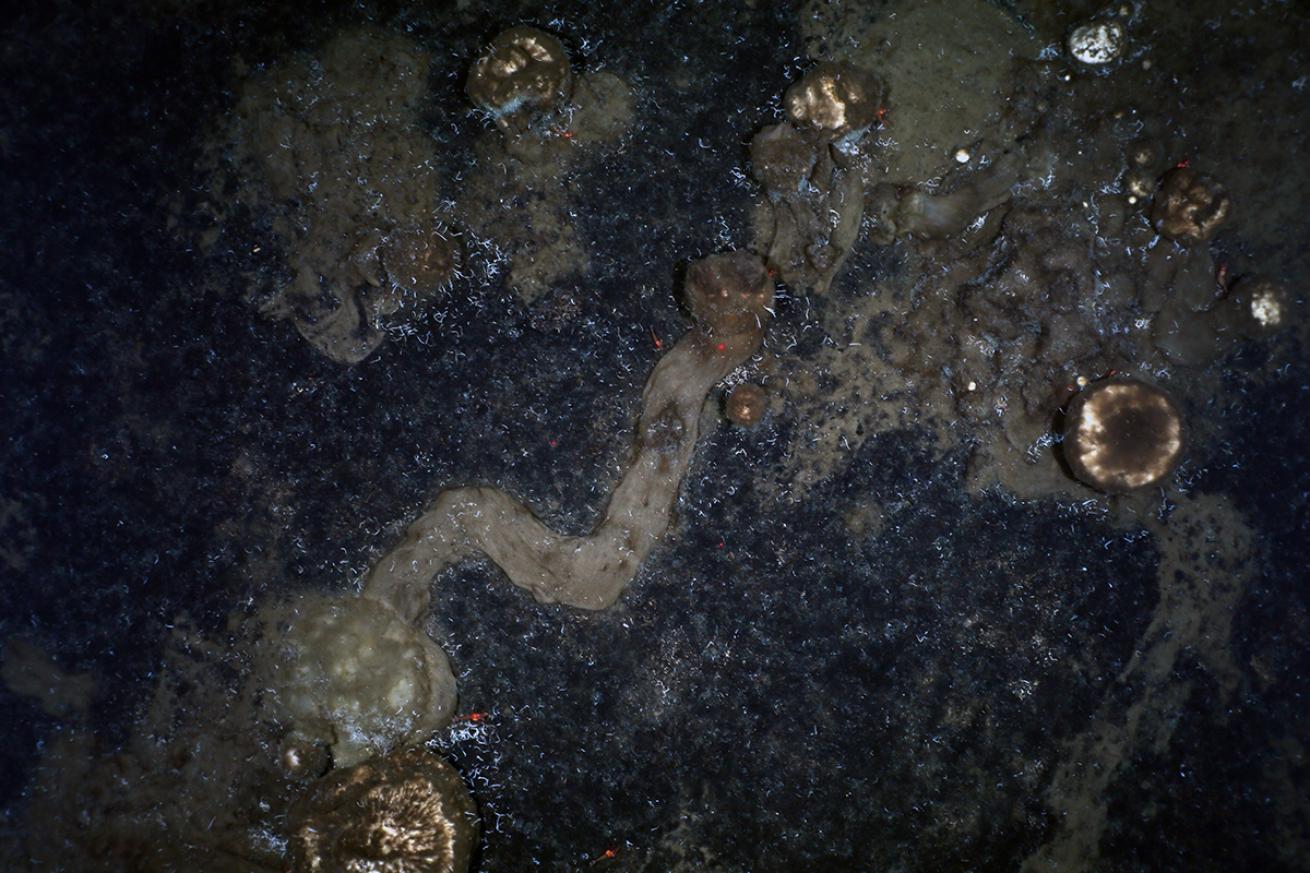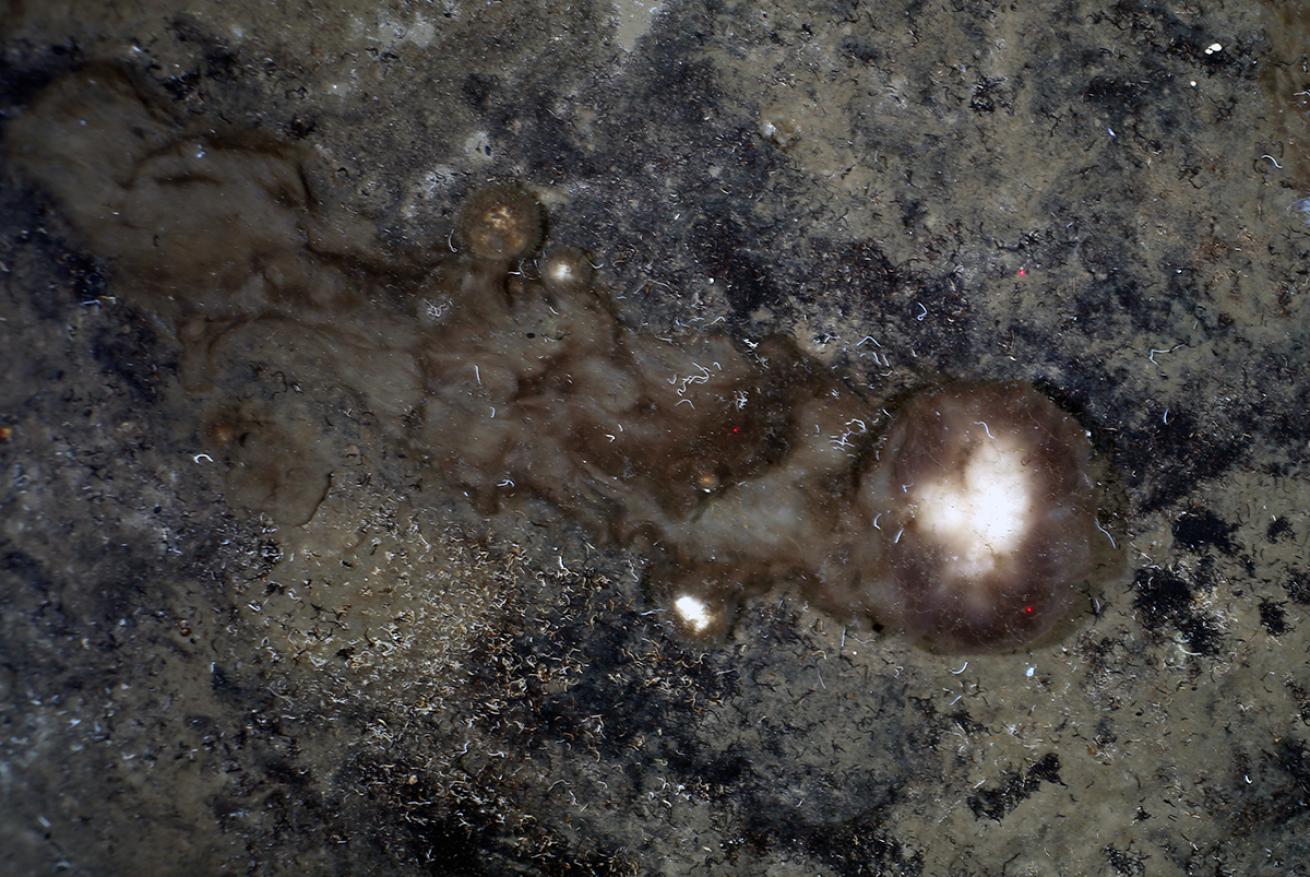Sea Sponges Have to Shed Body Parts to Move, Scientists Say

AWI OFOBS team, PS101Scientists are not sure why the sponges move, but it's apparent transplanting comes at a cost.
While it’s been long believed that adult sponges are stationary sea animals, a new report shows they do, in fact, move. But there’s a catch — they have to leave parts of their bodies behind to do so.
A team of Arctic researchers was using a remotely operated vehicle (ROV) to look for life around the deep seamounts of Langseth Ridge when they came across what appeared to be tracks on the rocks made by nearby sponges.
"This is the first time abundant sponge trails have been observed in situ and attributed to sponge mobility," the researchers write in the study, published recently in Current Biology.

AWI OFOBS team, PS101Small pieces of the sponge are left behind, marking its rocky trail.
On closer inspection, the team realized the tracks were made of spicules — small fragments of the sponge’s skeletons — that were still attached to the underside of the sponges after moving.
"These [trails of spicules] were observed to be several centimeters in height and occasionally many meters in length, often connected directly to living sponges," the researchers write.
To move, the sponges sink their spicules into the rock and use the point of contact to propel their bodies. As they shift forward, the spicules rip off their bodies and stay in the rock.
While observing the sponges, the team was able to rule out things like gravity and strong currents as a cause of the movement. Instead, the sponges are voluntarily moving on their own.
Researchers are still unsure why they’re shifting locations. It could be a way to scout better food spots, disperse offspring, or even purposely build spicule trails to give floating sponge larvae a place to settle.
Either way, the behavior appeared to be commonplace for the cold-water sponges in this region — 70 percent of images taken of live sponges by the team’s ROV showed spicule trails on the rocks behind them.










